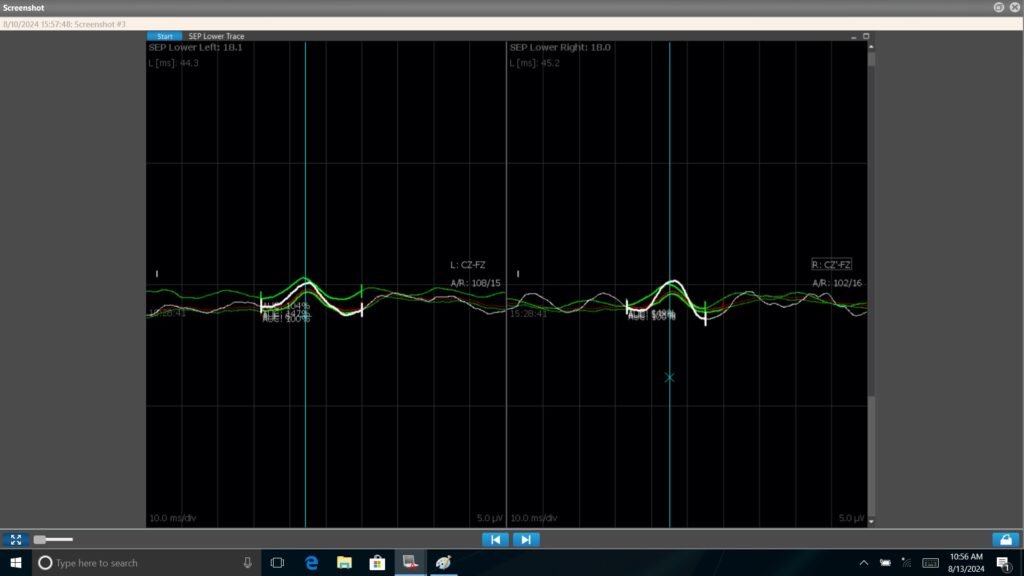Dropped MEP in scoliosis
A sudden drop in motor evoked potentials (MEPs) during scoliosis surgery can be a serious concern.

MEPs+ SSEP are used to monitor real time the function of the spinal cord and ensure that it is not being compromised during the procedure.
History. D4-L4 deformity of spine.
- 14 years old male
- Moderate low back pain LBP
- No H/O, trauma
Examination.
- Conscious, Following commands
- Vitals Stable.
- Chest, P/A – NAD.
- Higher mental functions – Normal.
- Cranial Nerves – Normal.
- Motor system.
- Tone -normal.
- Power – 5/5 all four limbs.
- DTRs- 2+ LL/UL.
- sensory– preserved all modalities posterior column in all four limbs.
X RAY spine.

Procedure D4-L4 deformity of spine correction under IONM.
- D4-L4 pedicle screw along with permanent rods.
- ↓ IONM
- Under GA.
Intraoperative photograph Base line MEPs.

Intraoperative photograph Base line SSEPs.

While putting the pedicle screw at RT D6 Level.{Dropped MEP in scoliosis}

Sudden signals of MEPs at RT side showed absent than informed the surgical team they confirmed with fluoroscope found breach {SSEP also showed at RT side absent}.
Necessary steps. {Dropped MEP in scoliosis}
- Operating surgeon opened pedicle than released epidural hematoma at breach side.
- From Anesthesiology and Neurophysiology side given injection Prednisolone to subside the cord edema and increases number of pulse 5+3 than we got signals not 100% but able to record.{ after 2-3 hours}

In this picture MEPs recordable from absent than surgery got completed.
Post operative.
That boy woke up with new neurological deficits – power was 3/5 than after couple of hours we found power 5/5.
Conclusion.
Immediate Response.{Dropped MEP in scoliosis}
- Alert the Surgical Team– Notify the surgeon and the anesthesiologist immediately about the drop in Motor Evoked Potential.
- Assess the Patient-Check the patient’s vital signs and overall condition. Ensure that there are no obvious signs of distress or complications.
- Follow necessary steps– Before informing the surgical team be sure with all possibilities than inform.
- Document the Incident: Record all details of the event, including potential causes and interventions taken.
Related to this article.
https://neurointraoperative.com/wp-admin/post.php?post=111&action=edit
https://www.ncbi.nlm.nih.gov/pmc/articles/PMC9635845
Questions.
- While MEP dropped procedure should have stopped?.
- Here what was the key to rule out false positive and true positive?.
- Why importance of steroid drug?.
- We should be concern bout hemodynamics
- What about wake-up test?.
